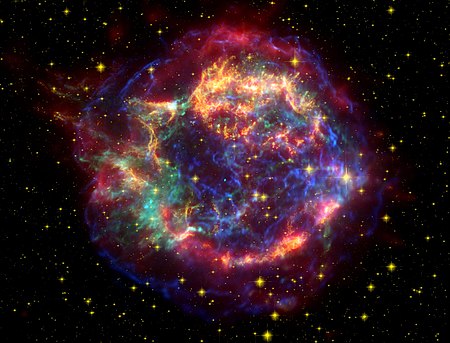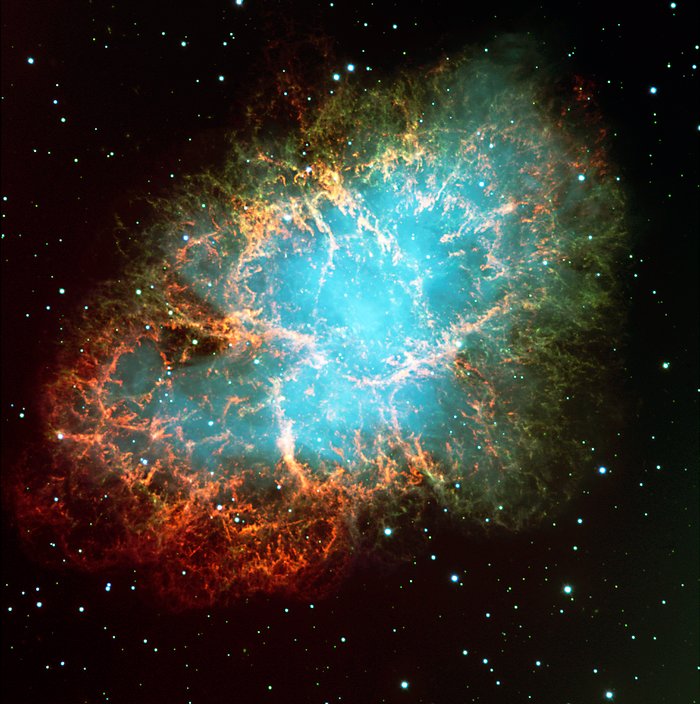
Credit: NASA/JPL-Caltech
During a supernova, a lot of the matter that makes up the star is thrown out into space. This material can often travel close to the speed of light. The cloud of material that surrounds the site of a supernova is called a supernova remnant. UV and X-rays from the original explosion light up the remnant and make it glow.
The shock wave of the explosion continues to push the cloud of material into space. The remnant will only last for a few thousand years before fading away. The matter spreads out through space and can act as seeds for a new generation of stars. We think our Solar System is made of material that has been recycled through supernovae at least twice.
The structure of these remnants is not always the same. They can be spherical like Cassiopeia A. Or they can look like they have long threads coming out of them, like the Crab Nebula. This type is often described as 'filamentary'.

Credit: European Southern Observatory
Chinese astronomers in 1054 saw the supernova that created the Crab Nebula. It was so bright, they could even see it as a star in the daytime. Knowing its age helps scientists understand how the remnant has changed over time. It also adds to what we know about pulsars. These are a special type of neutron star, the dense objects left behind after a supernova, which spin rapidly. The Crab Nebula pulsar spins around 30 times per second!
Kepler's Supernova was seen in 1604. This was before the invention of the telescope, but it was bright enough to be seen with the naked eye. It is still the most recently discovered supernova in the Milky Way.
SN1987A was discovered in February 1987 in a nearby dwarf galaxy called the Large Magellanic Cloud. This makes it the closest observed supernova since 1604. It shone brightly in the sky for more than 2 months. The remnant nebula it created is shaped like an hourglass. Astronomers studied it in detail using several wavelengths of light. However, the neutron star in its centre was not found until 2019.

(left: post-supernova, right pre-supernova)
Credit: David Malin, Anglo-Australian Observatory
